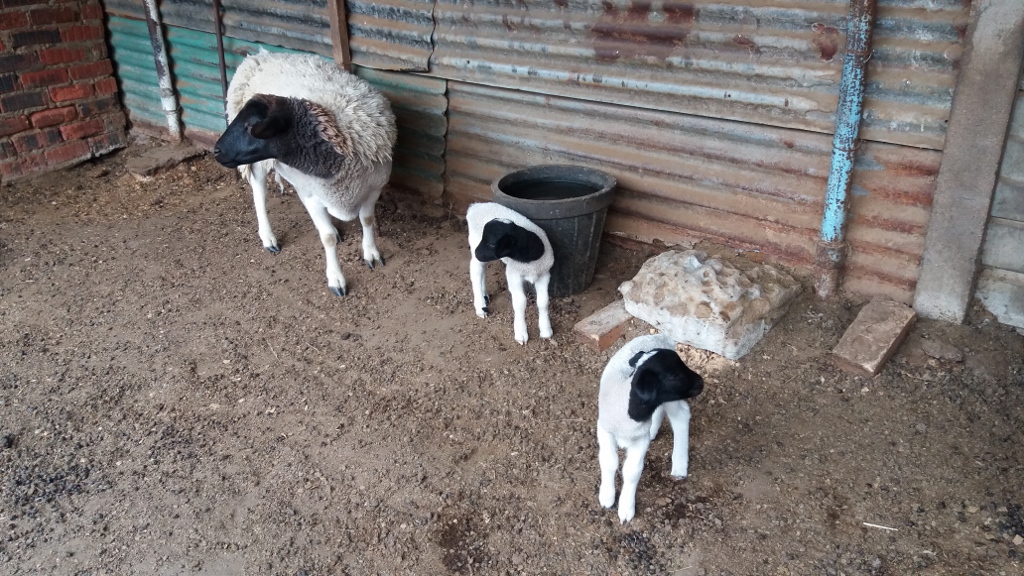The greatness of a nation and its moral progress can be judged by the way its animals are treated ~ Mahatma Gandhi.
Two events in the field of seaborne livestock transportation last month loomed large for animal rights activists, both in South Africa and internationally. First, after a protracted High Court battle, the NSPCA lost a bid to prevent a Kuwaiti livestock trader, a company named Al Mawashi, from loading sheep at East London aboard its 40-year-old ship named Al Messilah. To be fair, the judge granted permission for the loading of a smaller number ~ 65 000 ~ than Al Mawashi originally planned for, and made certain stipulations regarding pre-loading inspection of the vessel, and veterinary checks of the animals, but the shipment went ahead, and by the middle of last month the ship had reached the Persian Gulf port of Kuwait City to discharge her cargo. In temperatures of 42oC.
Meanwhile, further East off southern Japan, another livestock carrier, a relatively smaller converted container ship named Gulf Livestock 1, lost engine power during a cyclone, capsized and sank, taking with her 43 of her crew of 46. And nearly 6 000 head of cattle. She was bound from New Zealand to China. Why are these incidents important? Because they highlight the inherent risks to life, and the barbarity, of this trade.
The inherent risks to life are a result of the average ages of the ships, and thus their overall reliability. Very few livestock carriers are purpose-built from scratch. The vast majority have already had a career as, predominantly, container ships or small tankers, and are converted by having animal-handling ramps, multiple decks with pens, watering and feeding systems, forced air cooling, additional crew quarters, and carcass disposal units fitted.
This is the cheap and cheerful end of the shipping industry, and minor matters such as ship stability, engine reliability etc are often dismissed by owners keen to make a buck. Also, there is little romance in being aboard a livestock carrier as a crew member, surrounded by stench, and death. As a result, the crew who sign up on such ships are invariably from the dregs of the merchant marine who either have no idea of animal welfare or simply don’t care.
And the practice is barbaric.
The animals are trucked or railed to the harbour, corralled on the quayside and driven up the ramps into the ships, being “encouraged” by cattle prods and whips.
Once securely penned on one of the multiple decks, those unlucky enough to have been loaded first, and thus on one of the lower decks, will not see the sunlight until they reach their destination.
Water and food is provided, on the more sophisticated vessels by automatic conveyors and drinkers. Bedding is not provided, the animals standing on metal grates for the voyage. Handlers will periodically hose the pens down to remove droppings and urine.
Now anybody who has been to sea will know that a ship is in constant motion while underway, swaying from side to side and, depending on the state of the weather, pitching up and down. In humans it results in seasickness, and the cure is to fix one’s eyes on the horizon, which seems to settle one’s brain. Sheep and cattle don’t know this and besides, those in the bowels of the ship don’t have a view. As a result, some will slip, injure themselves, and even die (the death rate on livestock carriers can be as high as 20% of the total cargo).
Periodically, therefore, handlers will remove the carcasses from the pens, drag them to the rear of the ship and drop them into a gigantic mincing machine which empties out into the ship’s wake, along with the faeces and urine laden wash water from the pen cleaning.
Upon arrival at destination, two or three weeks after loading, the remaining animals, weakened and considerably thinner than when they were loaded, are herded off the ships, into quayside pens, and loaded aboard trucks or railway wagons, to be transported, in due course, to a slaughterhouse or sold for ritual slaughter. No living out their days recovering from their ordeal in a cool and green pasture.
There is a better way. Slaughter the animals before loading, chill the carcasses until deep frozen, pack them into refrigerated containers and send them off. No loss of condition on the voyage, and no cargo loss through injury, sickness or death.
It behoves every person with any inkling of animal welfare in their bones to stand up against this barbaric trade, and lobby the Dept of Agriculture, farmers unions and anybody else involved, to put a blanket stop to seaborne live animal exports. Let us as South Africans demonstrate our humanity towards animals to the world.

